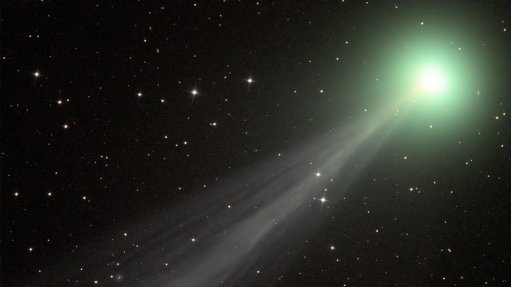
Comet SWAN
Photo by: Heine Rasmussen
Late last month the space-based Solar and Heliospheric Observatory (Soho), a joint programme between the European Space Agency (which is not part of the European Union) and the US National Aeronautics and Space Administration, detected a comet. Soho is located some 1.5-million kilometres from the Earth (some four times the distance to the Moon) and is focused on studying the Sun. It was launched in December 1995 and was originally expected to operate for just three years. Twenty-four years and five months after its launch, it is still going strong.
The latest comet was discovered by an instrument on the spacecraft designated SWAN, for Solar Wind Anisotropies. SWAN does not look at the Sun. Rather, it looks at the “imprint” of the solar wind on the flow of interstellar neutral hydrogen gas. The solar wind is a stream of particles and magnetic fields that are constantly emitted by the Sun.
It is because it does not look directly at the Sun that SWAN can also detect comets. This is not the only instrument on Soho that can detect comets and the spacecraft has detected more than 3 000 comets during its lifetime, representing more than half of all known comets.
The latest comet detected was designated C/2020 F8 (SWAN), or Comet SWAN for short. A comet is basically a giant snowball, made up of different types of ice (both frozen water and various frozen gases), dust and rock. Comet SWAN is currently about 100-million kilometres from Earth, located in the constellation Cetus, and is difficult to see from South Africa.
Even so, South African astronomer Heine Rasmussen succeeded in capturing a number of photographs of the comet. “I am very fortunate to live in the Cederberg in a dark sky area, where there is very little light pollution,” he explained. “Increasing urbanisation has kept skies in the towns and cities artificially light, so few people have experienced the magic of the Milky Way crossing a star studded sky.”
In many ancient cultures, comets were believed to be the harbingers of major events on Earth or otherwise highly symbolic. Thus, funeral games held in honour of Roman leader Julius Caesar following his assassination in 44 BC were coincidentally accompanied by the appearance of a very bright comet. To the Romans, however, it was no coincidence, but a proclamation by the gods that Caesar had been deified. Less than two years later, the Senate granted divine honours to the dead leader, the first Roman ever to be so honoured.